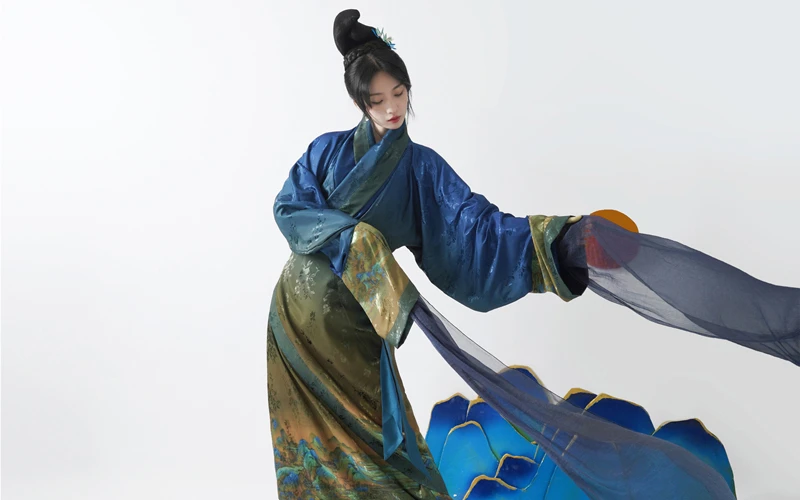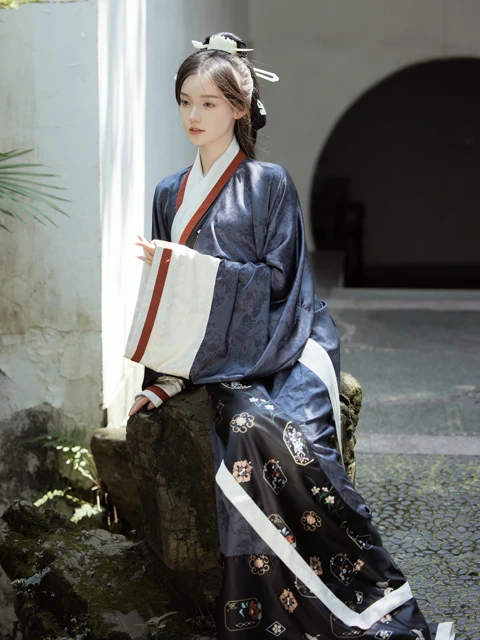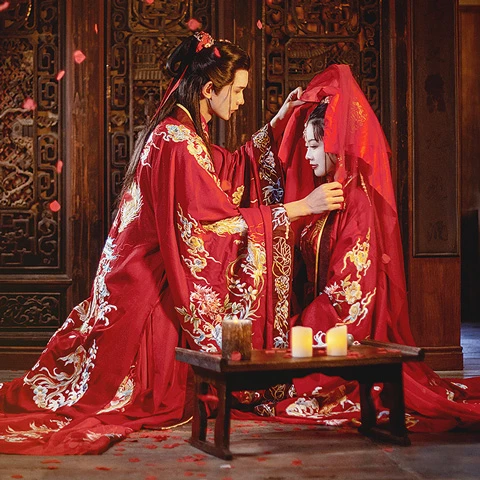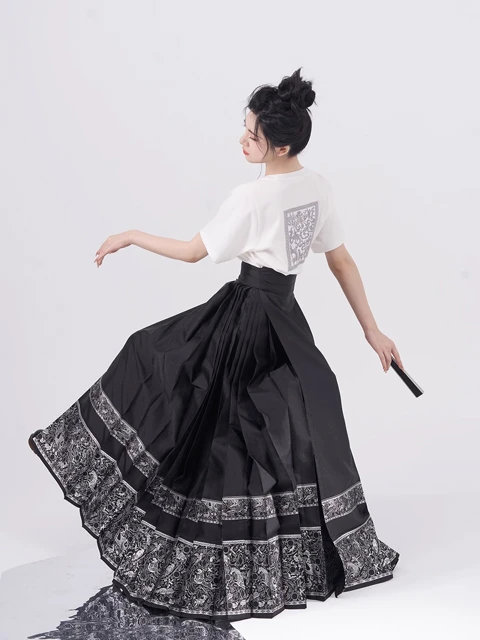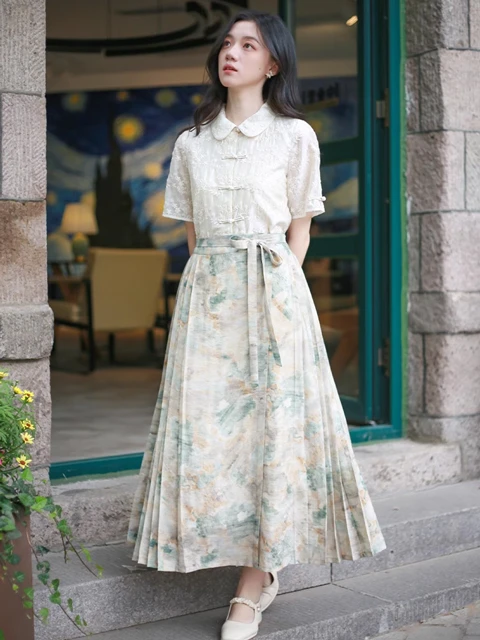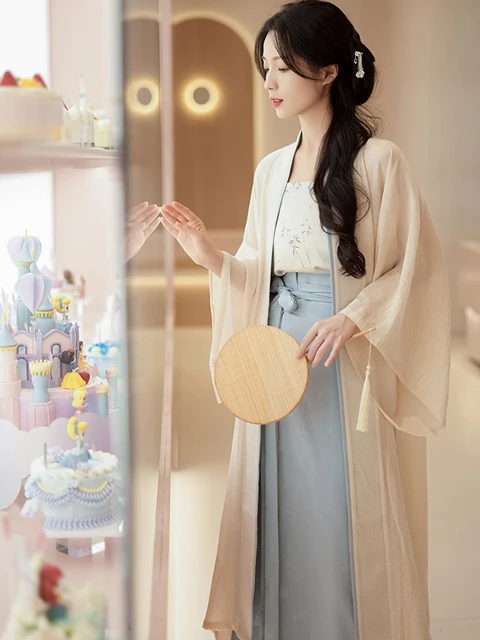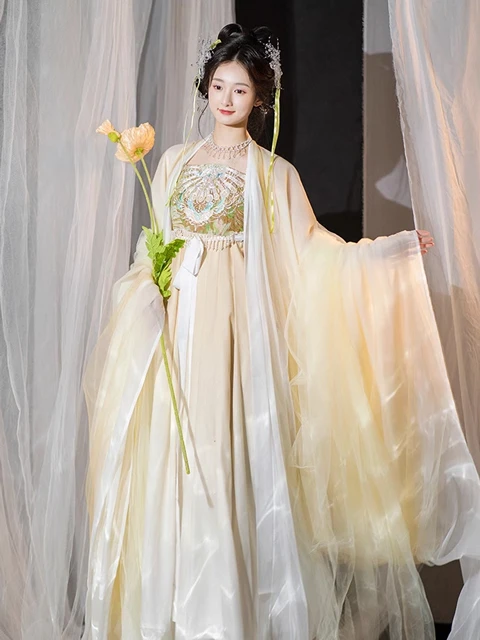Mamian skirt, Qixiong dress, and the hundred-pleat skirt; wearing traditional Hanfu has become a new trend in public attire in recent years, whether it be for sightseeing, wedding ceremonies, shopping, friend gatherings, and various other occasions. The "Hanfu craze" continues to rise, blending tradition with modernity, activating cultural resources, igniting the consumer market, and driving industrial development.
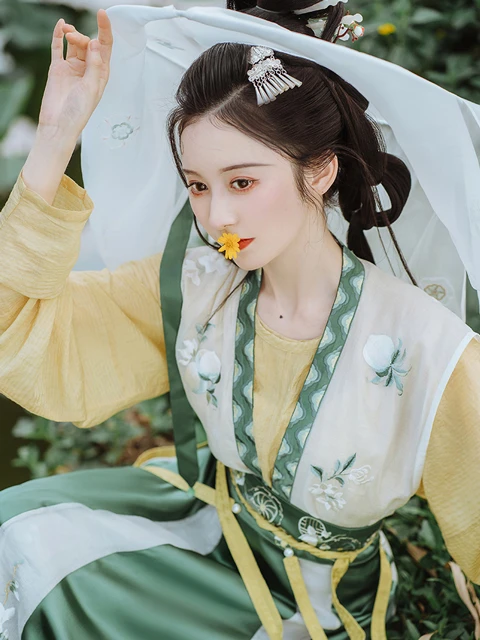
In recent years, Hanfu has gradually gained popularity among the younger generation, with their youthful expression and fashionable presentation bringing Chinese traditional culture into daily life in a tangible and palpable form. The long-standing Chinese traditional clothing culture embodies a blend of Chinese aesthetic interests, reflecting not only a consumer choice but also the Chinese people's love for outstanding traditional culture.
Demand exceeds supply
During the Spring Festival and Lantern Festival of the Year of the Dragon, the activity of "wearing Chinese costumes for free to visit the Confucian Temples" in Qufu City, Jining, Shandong, has been well received. Wang Chunling, a visitor from Liaoning, traveled a long distance with friends to play here, attracted by the lively atmosphere of night tours in the ancient city of Qufu and folk performances, and dressed in Hanfu to join the parade.
This year, garments like the Mamian skirt have almost become a standard for taking photos at popular attractions. During the Spring Festival, we can saw in Xunpu Village, Quanzhou City, Fujian Province, that visitors wearing Hanfu and hairpins were flocking together. In this famous fishing village, tourists rent Hanfu, do makeup, style their hair, follow the photographer's guidance to pose in various ways, and take photos at attractions such as Oyster Shell House, Shunji Palace, and Fishermen's Wharf, creating instant beautiful pictures.
The market is unable to meet the demand, and the Hanfu craze has brought happy troubles to industry practitioners like Zhao Hui. When the reporter visited Cao County, many tourists came specifically to purchase various New Year's greeting clothes, Hanfu, and performance costumes. Due to inventory depletion, some consumers even directly purchased the displayed clothing worn by models in the showroom.
The popularity of Hanfu in Cao County is supported by many factors. Cao County has a weak industrial foundation and was once the largest county in Shandong for labor exports. Over a decade ago, some villagers in Dajie Town tried to produce special clothing for photo studios and performances, but the market share was limited.
The change came with the rise of e-commerce. In 2009, villagers put these inexpensive and high-quality clothing on online Hanfu stores, inadvertently opening the door to the booming development of this industry. Driven by market trends, Cao County, known for the production and sale of performance costumes, has completely shifted to Hanfu production. Benefiting from over a decade of development in the performance costume industry, Cao County, organized at the family level, has established a meticulous market division of labor. Within a radius of 5 kilometers around Daji Town, Ancai Lou Town, and surrounding townships, there are clusters of all Hanfu production processes from pattern making, fabric cutting, printing, sewing, to finished garments.
With a flurry of orders, new digital printing, high-speed embroidery, and other new supporting processes and capacities have begun to take root here. In the past two years, new stores have sprung up like mushrooms, with over 100 digital printing factories in Dajie Town, Ancai Lou Town, and surrounding townships alone. In the past, Hanfu was a niche product. Today, Hanfu has adapted to the price demands of students and young people.
Top-stream Mamian Skirt
Multiple e-commerce platforms' data indicate that the search volume for Hanfu has surged since January this year, with the Mamian skirt becoming the most popular item in the Hanfu category. Why has the Mamian skirt become the top-stream explosive item in Hanfu, hailed by netizens as the new spring must buy?
The Mamian skirt, also known as the "Mamian pleated skirt," evolved from the Xuan skirt of the Song Dynasty and took shape in the Ming Dynasty as the Mamian skirt with a relatively fixed structure. It has four skirt doors in total, two overlapping each other, with side seams and a smooth surface formed by the overlap of the middle skirt doors, commonly known as the "Mamian". Originally designed as a functional skirt for ease of movement, the Mamian skirt combines aesthetics with practicality.
By 2023, the Mamian skirt had already become a hot category in Hanfu. "In 2023, a noticeable increase in market demand for Mamian skirts was observed. In addition to external factors such as dressing demonstrations at the Spring Festival Gala, celebrity effects, and dissemination through short videos, industry insiders believe that the primary reason many consumers choose the Mamian skirt is because it looks good and feels comfortable to wear. Western-style skirts are conventional, but wearing a Mamian skirt feels astonishing." Zhao Hui discussed the production techniques, "Each Mamian skirt is made with at least five or more types of craftsmanship, such as weaving gold, weaving silver, decorative flower patterns, and colorful designs, which are much more complex than embroidery. When people wear it, the patterns shimmer and shine in the sunlight, creating a dazzling effect as they walk through the crowd."
The color application of the Mamian skirt is rich, with hundreds of styles achieved, and the patterns on the skirt doors and edges are diverse, including traditional patterns symbolizing purity like lotus flowers, symbols of fertility like pomegranates and grapes, and symbols of lasting harmony like lilies, just to name a few. When everyone wears a Mamian skirt, it's like embodying traditional crafts such as Kesi, woven gold, and Raden, creating a close encounter with intangible cultural heritage.
The Mamian skirt embodies the inclusiveness of Hanfu. "Wearable for commuting, shopping, traveling casually, easy to pair with shirts, knitwear, and coats, regardless of body shape, with a flexible price range. The highly adaptable and cost-effective Mamian skirt is not only a fashionable item for celebrities and fashion bloggers but also a versatile choice for ordinary people to experience the trend of national style and embrace classical elegance. History and fashion, trends and culture, life and aesthetics, all in one Mamian skirt.
From the physical characteristics of clothing, experts believe that the Mamian skirt possesses the basic elements of mass dressing. The design of the Mamian skirt itself is closer to modern daily life, giving it better wearability and broader dissemination. The design of the Mamian skirt is simple and minimizes material wastage, making it suitable for fast production with the assistance of modern machinery, enabling production companies to introduce it quickly.
Into everyday life
Standing on the Torch Eight Street, a popular spot in Weihai, Shandong, pedestrians can gaze far into the vast sea, where the beautiful scenery unfolds before their eyes. In order to further meet the needs of tourists and enhance the tourism experience of Torch Eight Street, the government of Weihai is planning to introduce a series of culturally creative products with distinctive Weihai characteristics. Among them, the specially designed Mamian skirt will be available for rental and sale to tourists, becoming a must-have garment.
In recent years, professional fashion designers have clearly sensed a shift in societal clothing aesthetics towards the excellence of traditional Chinese culture. The rising trend of Hanfu represents a new wave of clothing nationalism, indicating that traditional clothing is making its way into the daily lives of the Chinese people, embodying the new aesthetic taste of the younger generation. Actively incorporating Hanfu elements and traditional cultural elements in clothing design is increasingly welcomed in the market.
The popularity of Hanfu demonstrates the influence of traditional Chinese culture. Last year, the majority of Hanfu purchasers were enthusiasts and young ladies, but this year consumers of all age groups are increasing. Children are choosing Hanfu as their new year's new clothes, and even some men are purchasing Hanfu for themselves or their friends.
According to Chen Long, a fashion design professional, including Hanfu, the new Chinese-style clothing is currently in an upward development trend, as traditional Chinese clothing is undergoing modernization. The combination of traditional aesthetics with contemporary aesthetics is making the revival of Hanfu inevitable. As material needs are gradually met, there is a continuous increase in people's spiritual pursuit of national culture and a growing cultural confidence.
In addition to the soaring popularity of Hanfu, in recent years, many new things symbolizing traditional culture are making their way into people's lives in different forms. Gathering to "cook tea over a stove," practicing the "Baduanjin" as a CloisonnE technique, enamel patterns like filigree becoming one of the most popular nail art styles, intangible cultural heritage, cultural creativity, and national style are becoming collective hobbies of the younger generation... The fusion of tradition and modernity is emerging with a sense of self-assured style among the Chinese.
In the eyes of scholars, the Hanfu fashion is precisely propelling the creative transformation and innovative development of outstanding traditional Chinese culture. Li Jie believes that the continuity of traditional culture spanning thousands of years can only return to daily life, shine in the present era, and flourish through new interpretations, creations, and narratives. It is essential to leverage new technologies and methods to deeply explore the vitality of traditional culture, infuse traditional culture with the energy for development through reform and innovation, integrate it better with modern production and life, and create more cultural wonders that blend historical charm with contemporary vibrancy.
